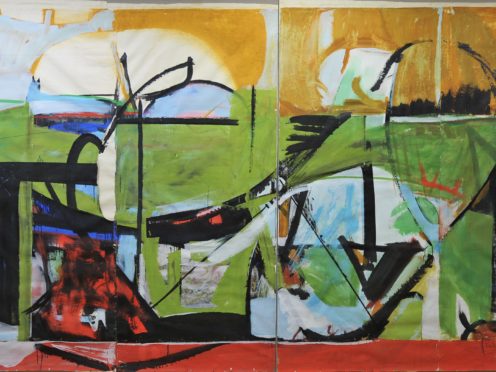Three works of art by Peter Lanyon have been acquired for the nation in lieu of inheritance tax and allocated to three different UK galleries.
The artist is considered to be one of Britain’s foremost post-war painters.
One of the works, Clevedon Bandstand 1964, is an abstract landscape which was painted shortly before his death after a gliding accident.

It is one of a handful of oil paintings that indicate a new direction in the work of the Cornish painter, showing how his earlier use of heavily worked layers of paint had given way to thin washes of oil of a brighter and more primary palette.
Two large gouaches on paper, which used opaque pigments ground in water and thickened with a glue-like substance, were studies for murals the artist was to paint at Liverpool and Birmingham universities.
They are both considered to be key works in themselves and important in tracing the development of Lanyon’s artistic thought when undertaking large public commissions.
The Birmingham mural was to be painted on board, and the Liverpool mural on an arrangement of ceramic tiles.
The oil painting has been allocated to Tate, and the two large gouaches to the University of Birmingham’s Research and Cultural Collections, and the Victoria Gallery & Museum, University of Liverpool.

They have been acquired from the estate of Lanyon’s widow, Sheila, through the Acceptance in Lieu (AIL) scheme, which allows inheritance tax debts to be written off in exchange for the acquisition of objects of national importance.
The acceptance of the paintings settled just under £900,000 of tax.
While their tax value exceeded the tax liability of the offerors, the Sheila Lanyon Estate waived some of the value of the three works and both the Tate and Victoria Gallery & Museum, Liverpool, contributed £72,000 and £8,000 each from their own resources.
Nicholas Serota, chairman of Arts Council England, said: “Although he died early, Peter Lanyon is increasingly recognised as one of the most important painters of the post-war period.
“Clevedon Bandstand is a painting that marks a turning point in his development, while the studies for the public murals demonstrate the admiration for his work that led to such commissions and his ability to work on a large scale.
“I am delighted that these three works will now be seen in such appropriate collections.”
